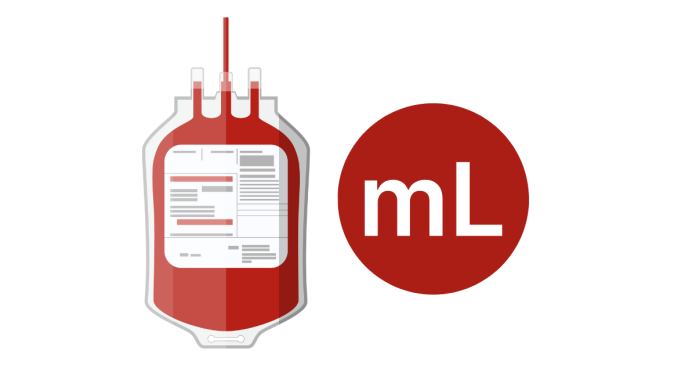One unit of blood is a standard measure used in blood transfusions and donation processes. It generally refers to the amount of blood collected in a single donation or the amount typically transfused at once. The volume of 1 unit of blood can vary slightly based on the collection and processing method, but the typical volume is:
1 unit of blood = 450 ml to 500 ml (milliliters)
Key Points
- Whole Blood Donations:
- When donating whole blood, a single unit is typically 450 ml of blood plus a small amount of anticoagulant solution (usually around 63 ml), making the total volume approximately 500 ml.
- Packed Red Blood Cells (PRBCs):
- After processing whole blood, one unit of PRBCs (used for transfusions) usually contains 200–350 ml of red blood cells suspended in a solution.
- Platelets and Plasma:
- Platelets and plasma are separated and stored in smaller volumes:
- Platelets: 50–70 ml per unit.
- Plasma: 200–250 ml per unit.
- Platelets and plasma are separated and stored in smaller volumes:
Factors That Can Affect Volume
- Collection Bag Size: Some donation centers collect slightly larger or smaller volumes.
- Processing Requirements: Components like red blood cells, platelets, and plasma may have varying final volumes based on medical needs.
- Pediatric Units: For children, smaller-volume units are prepared (e.g., 50–100 ml).
Conclusion
On average, 1 unit of blood collected during donation is around 450–500 ml, but the specific volume can vary based on the blood component and processing method.


